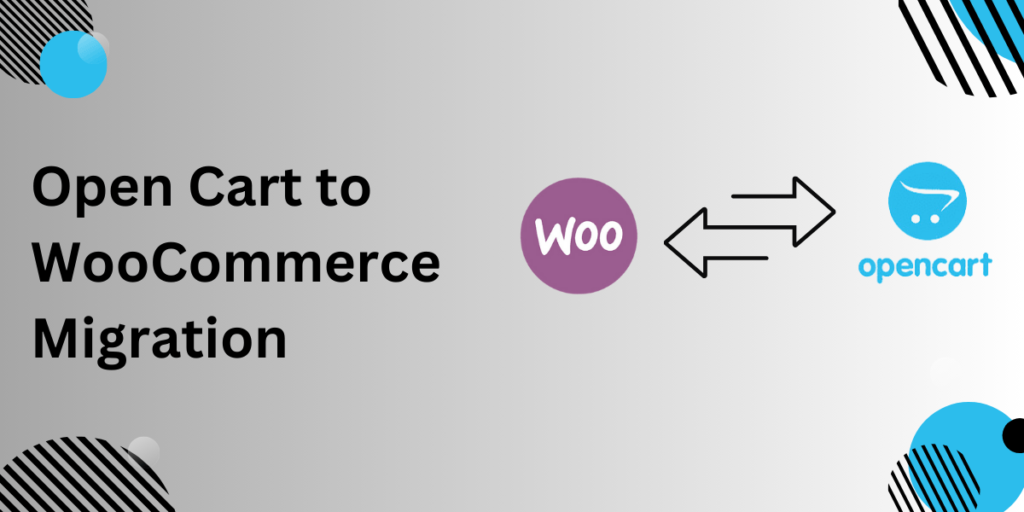OpenCart to WooCommerce migration can transform how your eCommerce business operates, providing better customization, improved SEO, and scalability. In this blog, we’ll explore a fresh perspective on the migration process and present new case studies of fictional companies that achieved success after making the switch.
Why Migrate from OpenCart to WooCommerce?
1. Flexibility for Future Growth
WooCommerce allows businesses to grow with ease. As your store expands, adding new products, categories, and even payment methods is seamless. OpenCart, while functional, doesn’t offer the same level of extensibility, particularly when managing a larger inventory.
2. Cost-Effective Management
Although both platforms are open-source, WooCommerce’s vast range of free and paid plugins offers better long-term cost management. With WooCommerce, you only pay for features that suit your business, saving unnecessary expenses on built-in tools you might not need.
3. Better User Experience
WooCommerce integrates directly with WordPress, making it easier to manage content, product descriptions, and blogs. OpenCart often lacks user-friendly interfaces, particularly when managing multiple sections of an eCommerce site.
Case Study 1: “GreenTech Solar Solutions”
Background: GreenTech, a solar energy equipment provider, started with OpenCart for their online store. As their product line expanded, they found OpenCart’s limited features problematic, especially in managing large product catalogs.
Migration Approach: To overcome these challenges, GreenTech moved to WooCommerce. Using a reliable migration tool, they transferred over 500 product listings, ensuring compatibility with WooCommerce’s product variations feature. Post-migration, they optimized the site with an SEO plugin and integrated a more user-friendly product filtering system.
Outcome: GreenTech saw a 20% increase in organic traffic and a 30% improvement in on-site engagement. The added flexibility allowed them to expand their catalog without facing system limitations, and the SEO improvements helped them reach new customers.
Takeaway: WooCommerce offers more scalability and customization options for businesses with complex product needs, making it a better long-term solution.
Case Study 2: “Crafty Creations”
Background: Crafty Creations, a small business selling handmade crafts, relied on OpenCart for their online presence. However, they struggled with a lack of customization for product pages and insufficient support for seasonal campaigns and promotions.
Migration Approach: Seeking a platform with better marketing tools, Crafty Creations opted for WooCommerce. They moved to WooCommerce to leverage its superior integration with email marketing platforms and plugins for discount management. They also customized product pages to feature seasonal collections.
Outcome: Crafty Creations saw an immediate boost in customer engagement during the holiday season. With better promotional tools and a more attractive layout, their sales jumped 25% in just two months. WooCommerce’s easy-to-use interface also allowed them to manage seasonal campaigns with minimal effort.
Takeaway: For businesses seeking improved marketing features and more engaging product layouts, WooCommerce provides a perfect solution for maximizing sales during peak seasons.
Case Study 3: “TechGuru Services”
Background: TechGuru, a B2B technology service provider, faced difficulties with OpenCart’s limited reporting tools. As they expanded their service offerings, keeping track of order histories, customer queries, and financial reports became increasingly challenging.
Migration Approach: TechGuru made the switch to WooCommerce due to its robust reporting tools and easy integration with third-party CRM software. During migration, they moved customer databases, service subscriptions, and previous invoices using a secure data migration tool.
Outcome: Post-migration, TechGuru gained valuable insights into their business performance using WooCommerce’s enhanced reporting tools. They reduced customer service response times by 20%, and their sales funnel optimization improved thanks to the seamless integration with their CRM software.
Takeaway: For businesses in the service sector, WooCommerce’s reporting capabilities and integrations provide a significant advantage, leading to improved decision-making and streamlined operations.
Key Steps to a Successful Migration
1. Backup and Plan
Before beginning the migration process, create backups of all important data. This includes customer details, product information, and transaction histories.
2. Choose the Right Migration Tool
Use a reputable migration tool, such as FMEAddons’ OpenCart to WooCommerce migration solution. This ensures that product data, orders, and customer information are transferred accurately and securely.
3. Customize and Optimize
Post-migration, focus on customizing your WooCommerce store. From installing SEO plugins to improving product pages, WooCommerce offers tools that help boost your site’s performance and customer experience.
4. Testing and Launch
Once your migration is complete, test your new WooCommerce store extensively. Check for broken links, ensure that product data is accurate, and run tests on your checkout process to prevent any disruptions for customers.
Conclusion
OpenCart to WooCommerce migration offers substantial benefits for eCommerce businesses looking to expand and improve their online stores. Whether you’re aiming for better marketing tools, improved product customization, or enhanced reporting, WooCommerce provides the features necessary for sustainable growth.
As demonstrated by fictional companies like GreenTech Solar Solutions, Crafty Creations, and TechGuru Services, WooCommerce’s flexibility and integration capabilities make it a superior choice for businesses of all sizes. If you’re considering making the switch, now is the time to explore the limitless possibilities WooCommerce has to offer.
Related Article:



